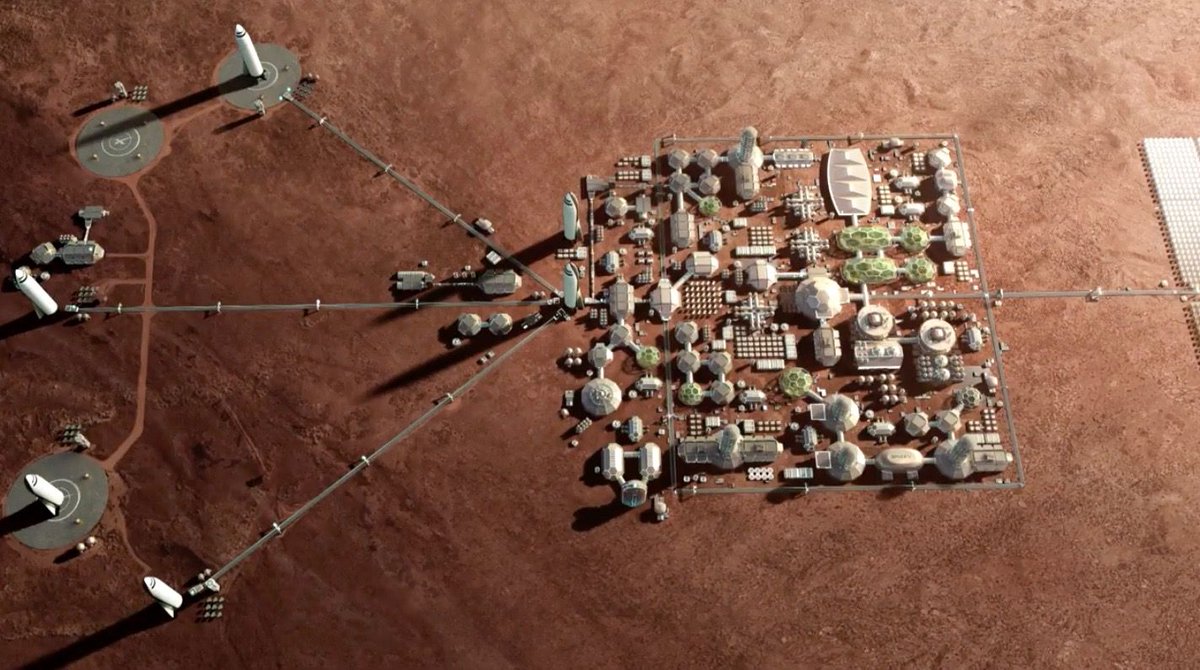What would the economy of a future Mars society look like, and how could it be self-sustaining while being completely sovereign from Earth and its own economy? This is what a recent study submitted to Space Policy hopes to address as a sole researcher discusses a model that could be used for establishing economic freedom on Mars, enabling both monetary and political stability across all Red Planets settlements. This study holds the potential to help scientists, economists, and world leaders better understand plausible governmental systems used by human settlers on other worlds while maintaining sovereignty from Earth and its own governmental law and order.
Continue reading “What could a future sovereign Mars economy look like?”Fish Could Turn Regolith into Fertile Soil on Mars
What a wonderful arguably simple solution. Here’s the problem, we travel to Mars but how do we feed ourselves? Sure we can take a load of food with us but for the return trip that’s a lot. If we plan to colonise the red planet we need even more. We have to grow or somehow create food while we are there. The solution is an already wonderfully simple ‘biosphere’ style system; a fish tank! New research suggests fish could be raised in an aquatic system and nutrient rich water can fertilise and grow plants in the regolith! A recent simulation showed vegetables could be grown in regolith fertilised by the fish tank water!
Continue reading “Fish Could Turn Regolith into Fertile Soil on Mars”What’s the Bare Minimum Number of People for a Mars Habitat?
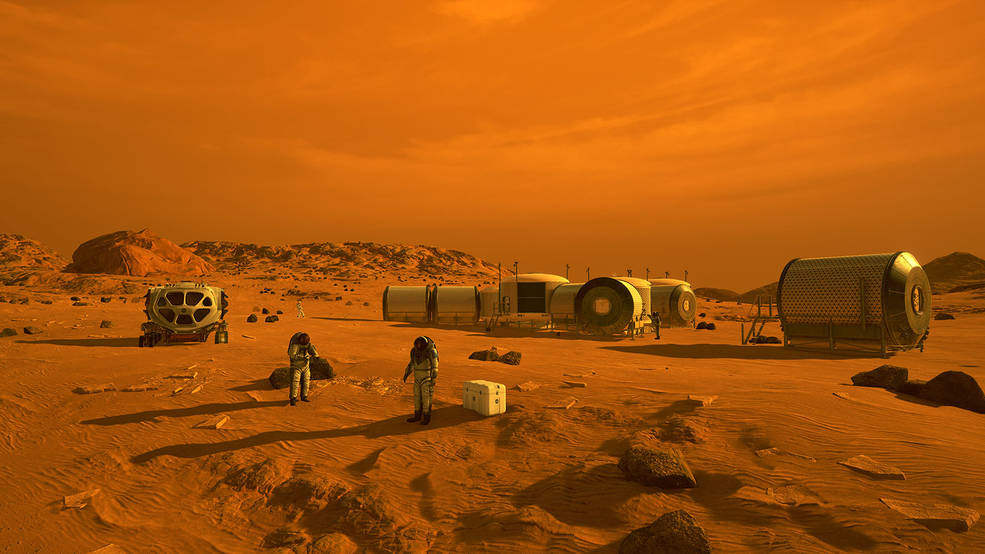
A recent preprint paper examines the minimum number of people required to maintain a feasible settlement on Mars while accounting for psychological and behavioral factors, specifically in emergency situations. This study was conducted by a team of data scientists from George Mason University and holds the potential to help researchers better understand the appropriate conditions for a successful long-term Mars settlement, specifically pertaining to how those settlers will get along during all situations. But why is it important to better understand the psychological factors pertaining for a potential future Mars colony?
Continue reading “What’s the Bare Minimum Number of People for a Mars Habitat?”A Mars Colony Could be a Hydrogen Factory, Providing Propellant for the Inner Solar System
There are lots of potential uses for a Mars colony. It could be a research outpost, mining colony, or even a possible second home if something happens to go drastically wrong on our first one. But it could also be a potential source of what is sure to be one of the most valuable elements in the space economy – hydrogen.
Continue reading “A Mars Colony Could be a Hydrogen Factory, Providing Propellant for the Inner Solar System”Here’s the Best Place for Explorers to Harvest Martian Ice
Water ice, especially any located in the sub-surface, has long been a focal point of Mars exploration efforts. Reasons abound as to why – from the need to grow plants to the need to create more rocket fuel to blast off the planet for a round trip. Most of that effort has focused on the poles of the planet, where most of the water ice has been found.
Continue reading “Here’s the Best Place for Explorers to Harvest Martian Ice”The Bare Minimum Number of Martian Settlers? 110
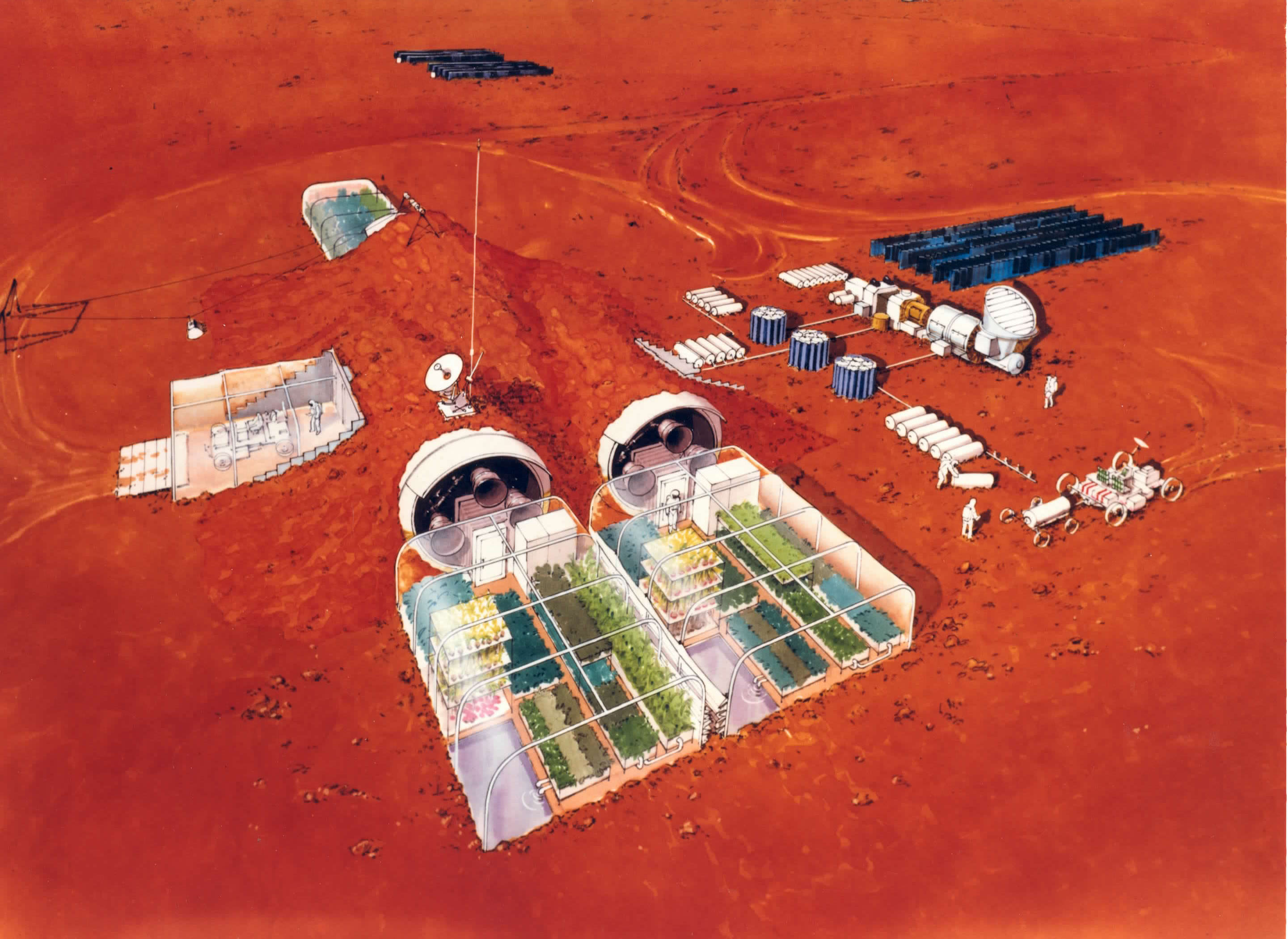
So you want to colonize Mars, huh? Well Mars is a long ways away, and in order for a colony to function that far from Earthly support, things have to be thought out very carefully. Including how many people are needed to make it work.
A new study pegs the minimum number of settlers at 110.
Continue reading “The Bare Minimum Number of Martian Settlers? 110”Mars One, the Plan to Make a Reality Show on Mars, is Bankrupt
In 2012, Dutch entrepreneur Bas Lansdorp launched the world’s first private and crowdsourced-effort to create a permanent outpost on Mars. Known as Mars One, this organization was the focus of a lot of press since it’s inception, some of it good, most of it bad. While there were many who called the organization’s plan a “suicide mission” or a “scam”, others invested their time, energy, and expertise to help make it happen.
In addition, thousands of volunteers signed on for the adventure, willing to risk life and limb to become part of the first one-way trip to the Red Planet. Unfortunately, we may never get to know if Bas Lansdorp’s plan for colonizing Mars was feasible or even sincere. According to a recent declaration by a Swiss Court, Mars One Ventures (the for-profit arm of Mars One) is now bankrupt.
Continue reading “Mars One, the Plan to Make a Reality Show on Mars, is Bankrupt”Musk Gives an Update on When a Mars Colony Could be Built
Elon Musk is well-known for his ability to create a media sensation. Scarcely a week goes by that the founder of SpaceX and Tesla doesn’t have an announcement or update to make – often via his social media outlet of choice, twitter. And as a major figure in the NewSpace industry, anything he says is guaranteed to elicit reactions (both critical and hopeful) from the space community and general public.
Just last week (on Monday, Sept. 17th), he revealed new information about the Big Falcon Rocket (BFR) and who its first passenger would be when it conducts its first lunar mission (which is planned for 2023). And on Friday (Sept. 21st), Musk shared some updated plans on when a SpaceX Martian colony could be established. According to the tweet he posted, his company could build a base on Mars (Mars Base Alpha) as early as 2028.
Continue reading “Musk Gives an Update on When a Mars Colony Could be Built”
Is Human Hibernation Possible? Going to Sleep for Long Duration Spaceflight
We’ve spent a few articles on Universe Today talking about just how difficult it’s going to be to travel to other stars. Sending tiny unmanned probes across the vast gulfs between stars is still mostly science fiction. But to send humans on that journey? That’s just a level of technology beyond comprehension.
For example, the nearest star is Proxima Centauri, located a mere 4.25 light years away. Just for comparison, the Voyager spacecraft, the most distant human objects ever built by humans, would need about 50,000 years to make that journey.
I don’t know about you, but I don’t anticipate living 50,000 years. No, we’re going to want to make the journey more quickly. But the problem, of course, is that going more quickly requires more energy, new forms of propulsion we’ve only starting to dream up. And if you go too quickly, mere grains of dust floating through space become incredibly dangerous.
Based on our current technology, it’s more likely that we’re going to have to take our time getting to another star.
And if you’re going to go the slower route, you’ve got a couple of options. Create a generational ship, so that successive generations of humans are born, live out their lives, and then die during the hundreds or even thousands of year long journey to another star.
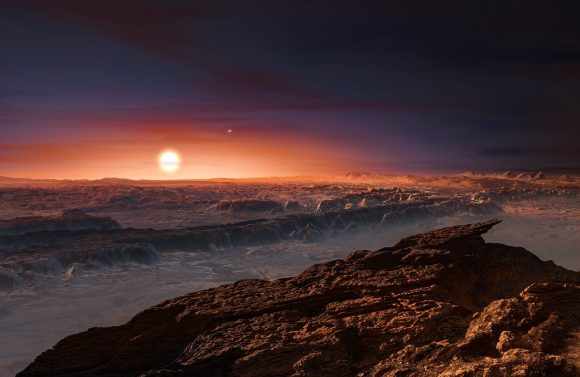
Imagine you’re one of the people destined to live and die, never reaching your destination. Especially when you look out your window and watch a warp ship zip past with all those happy tourists headed to Proxima Centauri, who were start enough to wait for warp drives to be invented.
No, you want to sleep for the journey to the nearest star, so that when you get there, it’s like no time passed. And even if warp drive did get invented while you were asleep, you didn’t have to see their smug tourist faces as they zipped past.
Is human hibernation possible? Can we do it long enough to survive a long-duration spaceflight journey and wake up again on the other side?
Before I get into this, we’re just going to have to assume that we never merge with our robot overlords, upload ourselves into the singularity, and effortlessly travel through space with our cybernetic bodies.
For some reason, that whole singularity thing never worked out, or the robots went on strike and refused to do our space exploration for us any more. And so, the job of space travel fell to us, the fragile, 80-year lifespanned mammals. Exploring the worlds within the Solar System and out to other stars, spreading humanity into the cosmos.
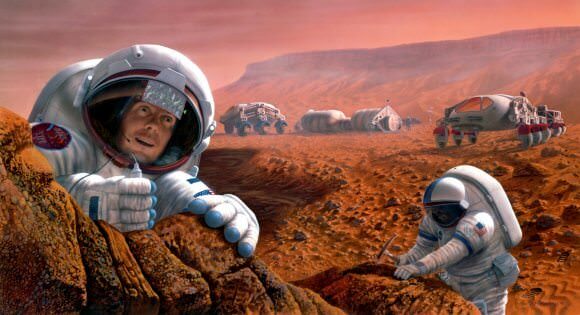
Come on, we know it’ll totally be the robots. But that’s not what the science fiction tells us, so let’s dig into it.
We see animals, and especially mammals hibernating all the time in nature. In order to be able survive over a harsh winter, animals are capable of slowing their heart rate down to just a few beats a minute. They don’t need to eat or drink, surviving on their fat stores for months at a time until food returns.
It’s not just bears and rodents that can do it, by the way, there are actually a couple of primates, including the fat-tailed dwarf lemur from Madagascar. That’s not too far away on the old family tree, so there might be hope for human hibernation after all.
In fact, medicine is already playing around with human hibernation to improve people’s chances to survive heart attacks and strokes. The current state of this technology is really promising.
They use a technique called therapeutic hypothermia, which lowers the temperature of a person by a few degrees. They can use ice packs or coolers, and doctors have even tried pumping a cooled saline solution through the circulatory system. With the lowered temperature, a human’s metabolism decreases and they fall unconscious into a torpor.
But the trick is to not make them so unconscious that they die. It’s a fine line.
The results have been pretty amazing. People have been kept in this torpor state for up to 14 days, going through multiple cycles.
The therapeutic use of this torpor is still under research, and doctors are learning if it’s helpful for people with heart attacks, strokes or even the progression of diseases like cancer. They’re also trying to figure out if there are any downsides, but so far, there don’t seem to be any long-term problems with putting someone in this torpor state.
A few years ago, SpaceWorks Enterprises delivered a report to NASA on how they could use this therapeutic hypothermia for long duration spaceflight within the Solar System.
Currently, a trip to Mars takes about 6-9 months. And during that time, the human passengers are going to be using up precious air, water and food. But in this torpor state, SpaceWorks estimates that the crew will a reduction in their metabolic rate of 50 to 70%. Less metabolism, less resources needed. Less cargo that needs to be sent to Mars.
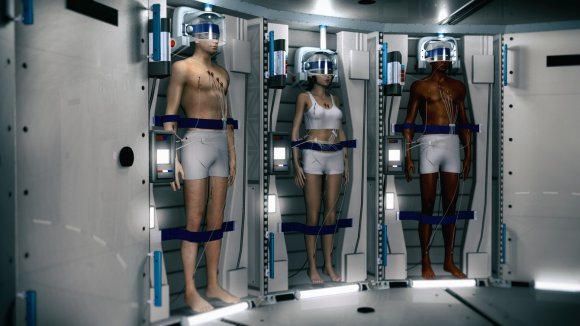
The astronauts wouldn’t need to move around, so you could keep them nice and snug in little pods for the journey. And they wouldn’t get into fights with each other, after 6-9 months of nothing but day after day of spaceflight.
We know that weightlessness has a negative effect on the body, like loss of bone mass and atrophy of muscles. Normally astronauts exercise for hours every day to counteract the negative effects of the reduced gravity. But SpaceWorks thinks it would be more effective to just put the astronauts into a rotating module and let artificial gravity do the work of maintaining their conditioning.
They envision a module that’s 4 metres high and 8 metres wide. If you spin the habitat at 20 revolutions per minute, you give the crew the equivalent of Earth gravity. Go at only 11.8 RPM and it’ll feel like Mars gravity. Down to 7.8 and it’s lunar gravity.
Normally spinning that fast in a habitat that small would be extremely uncomfortable as the crew would experience different forces at different parts of their body. But remember, they’ll be in a state of torpor, so they really won’t care.
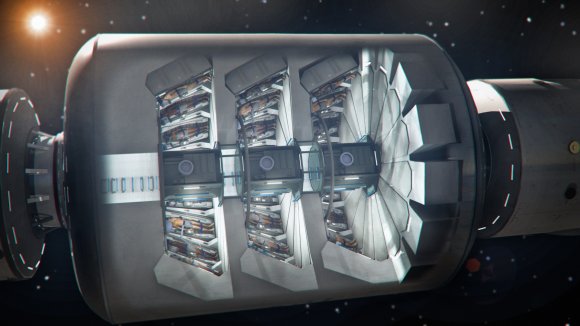
Current plans for sending colonists to Mars would require 40 ton habitats to support 6 people on the trip. But according to SpaceWorks, you could reduce the weight down to 15 tons if you just let them sleep their way through the journey. And the savings get even better with more astronauts.
The crew probably wouldn’t all sleep for the entire journey. Instead, they’d sleep in shifts for a few weeks. Taking turns to wake up, check on the status of the spacecraft and crew before returning to their cryosleep caskets.
What’s the status of this now? NASA funded stage 1 of the SpaceWorks proposal, and in July, 2016 NASA moved forward with Phase 2 of the project, which will further investigate this technique for Mars missions, and how it could be used even farther out in the Solar System.
Elon Musk should be interested in seeing their designs for a 100-person module for sending colonists to Mars.
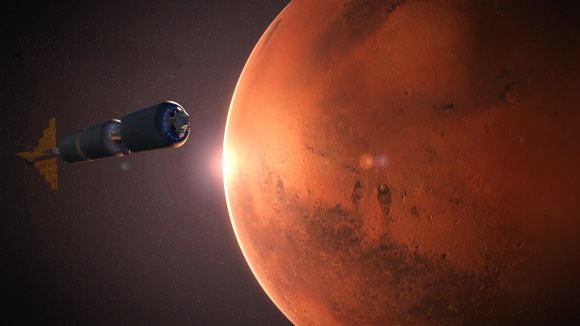
In addition, the European Space Agency has also been investigating human hibernation, and a possible way to enable long-duration spaceflight. They have plans to test out the technology on various non-hibernating mammals, like pigs. If their results are positive, we might see the Europeans pushing this technology forward.
Can we go further, putting people to sleep for decades and maybe even the centuries it would take to travel between the stars?
Right now, the answer is no. We don’t have any technology at our disposal that could do this. We know that microbial life can be frozen for hundreds of years. Right now there are parts of Siberia unfreezing after centuries of permafrost, awakening ancient microbes, viruses, plants and even animals. But nothing on the scale of human beings.
When humans freeze, ice crystals form in our cells, rupturing them permanently. There is one line of research that offers some hope: cryogenics. This process replaces the fluids of the human body with an antifreeze agent which doesn’t form the same destructive crystals.
Scientists have successfully frozen and then unfrozen 50-milliliters (almost a quarter cup) of tissue without any damage.
In the next few years, we’ll probably see this technology expanded to preserving organs for transplant, and eventually entire bodies, and maybe even humans. Then this science fiction idea might actually turn into reality. We’ll finally be able to sleep our way between the stars.
Can We Own Space? Buying Your Own Piece of the High Frontier
Compared to a regular human, the Earth is enormous. And compared to the Earth, the Universe is really enormous. Like, maybe infinitely enormous.
And yet, Earth is the only place humans are allowed to own. You can buy a plot of land in the city or the country, but you can’t buy land on the Moon, on Mars or on Alpha Centauri.
It’s not that someone wouldn’t be willing to sell it to you. I could point you at a few locations on the internet where someone would be glad to exchange your “Earth money” for some property rights on the Moon. But I can also point you to a series of United Nations resolutions which clearly states that outer space should be free for everyone. Not even the worst rocky outcrop of Maxwell Montes on Venus, or the bottom of Valles Marineris on Mars can be bought or sold.
However, the ability to own property is one of the drivers of the modern economy. Most people either own land, or want to own land. And if humans do finally become a space faring civilization, somebody is going to want to own the property rights to chunks of space. They’re going to want the mining rights to extract resources from asteroids and comets.
We’re going to want to know, once and for all, can I buy the Moon?
Until the space age, the question was purely hypothetical. It was like asking if you could own dragons, or secure the mining rights to dreams. Just in case those become possible, my vote to both is no.
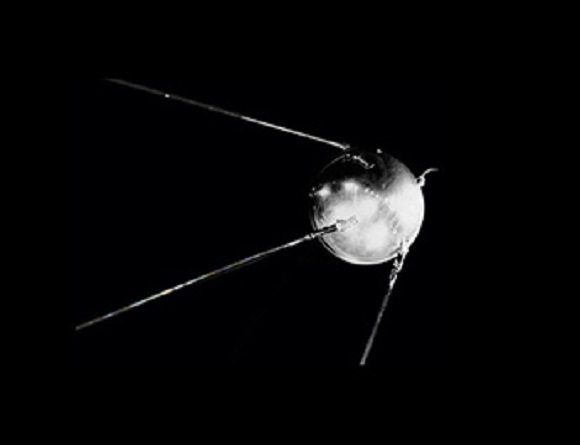
But when the first satellite was placed into orbit in 1957, things became a lot less hypothetical. Once multiple nations had reached orbitable capabilities, it became clear that some rules needed to be figured out – the Outer Space Treaty.
The first version of the treaty was signed by the US, Soviet Union and the United Kingdom back in 1967. They were mostly concerned with preventing the militarization of space. You’re not allowed to put nuclear weapons into space, you’re not allowed to detonate nuclear weapons on other planets. Seriously, if you’ve got plans and they relate to nuclear weapons, just, don’t.
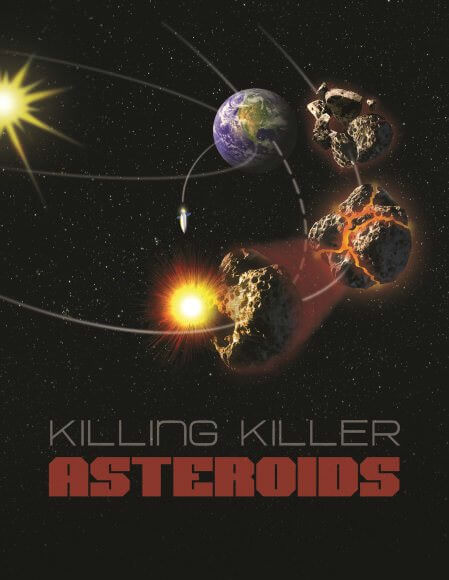
Over the years, almost the entire world has signed onto the Outer Space Treaty. 106 countries are parties and another 24 have signed on, but haven’t fully ratified it yet.
In addition to all those nuclear weapons rules, the United Nations agreed on several other rules. In fact, its full name is, The Treaty on Principles Governing the Activities of States in the Exploration and Use of Outer Space, including the Moon and Other Celestial Bodies.
Here’s the relevant language:
Outer space, including the moon and other celestial bodies, is not subject to national appropriation by claim of sovereignty, by means of use or occupation, or by any other means.
No country can own the Moon. No country can own Jupiter. No country can own a tiny planet, off in the corner of the Andromeda Galaxy. And no citizens or companies from those countries can own any property either.
And so far, no country has tried to. Seriously, space exploration is incredibly difficult. We’ve only set foot on the Moon a couple of times, decades ago, and never returned.
But with all the recent developments, it looks like we might be getting closer to wondering if we can own dragons, or a nice acreage on Mars.
Perhaps the most interesting recent development is the creation of not one, not two, but three companies dedicated to mining resources from asteroids: Planetary Resources, Kepler Energy, and Deep Space Industries.
Just a single small asteroid could contain many useful minerals, and there could potentially be tens of billions of dollars in profit for anyone who can sink robotic mining shafts into them.
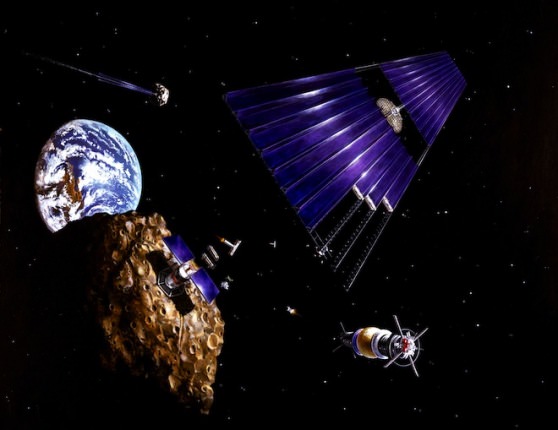
The three different companies have their own plans on how they’re going to identify potential mining targets and extract resources, and I’m not going to go into all the details of what it would take to mine an asteroid in this video.
But according to the Outer Space Treaty, is it legal? The answer, is: probably.
The original treaty was actually pretty vague. It said that no country can claim sovereignty over a world in space, but that doesn’t mean we can’t utilize some of its resources. In fact, future missions to the Moon and Mars depend on astronauts “living off the land”, harvesting local resources like ice to make air, drinking water and rocket fuel. Or building structures out of Martian regolith.
Mining an entire asteroid for sweet sweet profit is just a difference of scale.
In order to provide some clarity, the United States passed the U.S. Commercial Space Launch Competitiveness Act of 2015. This gave details on how space tourism should work, and described how companies might mine minerals from space. The gist of the law is, if an American citizen can get their hands on materials from an asteroid, they own it, and they’re free to sell it.

As you know, SpaceX is planning to colonize Mars. Well, so far, their plans include building the most powerful rocket ever built, and hurling human beings at Mars, hundreds at a time. The first mission is expected to blast off in 2024, so this is quickly becoming a practical issue.
What are the legalities of colonizing Mars? Will you own a chunk of land when you stumble out of the Interplanetary Transport Ship out on the surface of Mars?
Right now, you can imagine the surface of Mars like a research station on Antarctica. If SpaceX, an American company, builds a colony on Mars, then it’s essentially US government property. Anything that happens within that colony is under the laws of the United States.
If a group of colonists from China, for example, set out on their own, they would be building a little piece of China. And no matter what kind of facility they build, nobody within the team actually owns their homes.
If you’re out on the surface, away from a base, everything reverts to international law. Watch out for space pirates!

Under the treaty, every facility is obliged to provide access to anyone else out there, which means that members of one facility are free to visit any other facility. You can’t lock your door and keep anyone out.
In fact, if anyone’s in trouble, you’re legally bound to do everything you can (within reason) to lend your assistance.
The bottom line is that the current Outer Space Treaty is not exactly prepared for the future reality of the colonization of Mars. As more and more people reach the Red Planet, you’d expect they’re going to want to govern themselves. We’ve seen this play out time and time again on Earth, so it won’t be surprising when the Mars colonies band together to declare their separation from Earth.
That said, as long as they’re reliant on regular supplies from Earth, they won’t be able to fully declare their independence. As long as they have interests on Earth, our planet’s governments will be able to squeeze them and maintain their dominance.
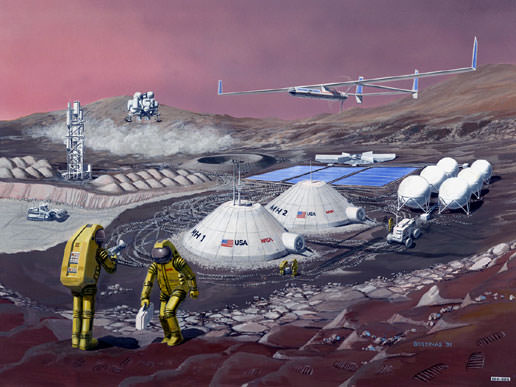
Once a Mars colony is fully self sufficient, though, which Elon Musk estimates will occur by 1 million inhabitants, Earth will have to recognize a fully independent Mars.
Space law is going to be one of the most interesting aspects of the future of space exploration. It’s really the next frontier. Concepts which were purely theoretical are becoming more and more concrete, and lawyers will finally be the heroes we always knew they could be.
If you’ve always wanted to be an astronaut, but your parents have always wanted you to be a lawyer, now’s your chance to do both. An astronaut space lawyer. I’m just saying, it’s an option.



